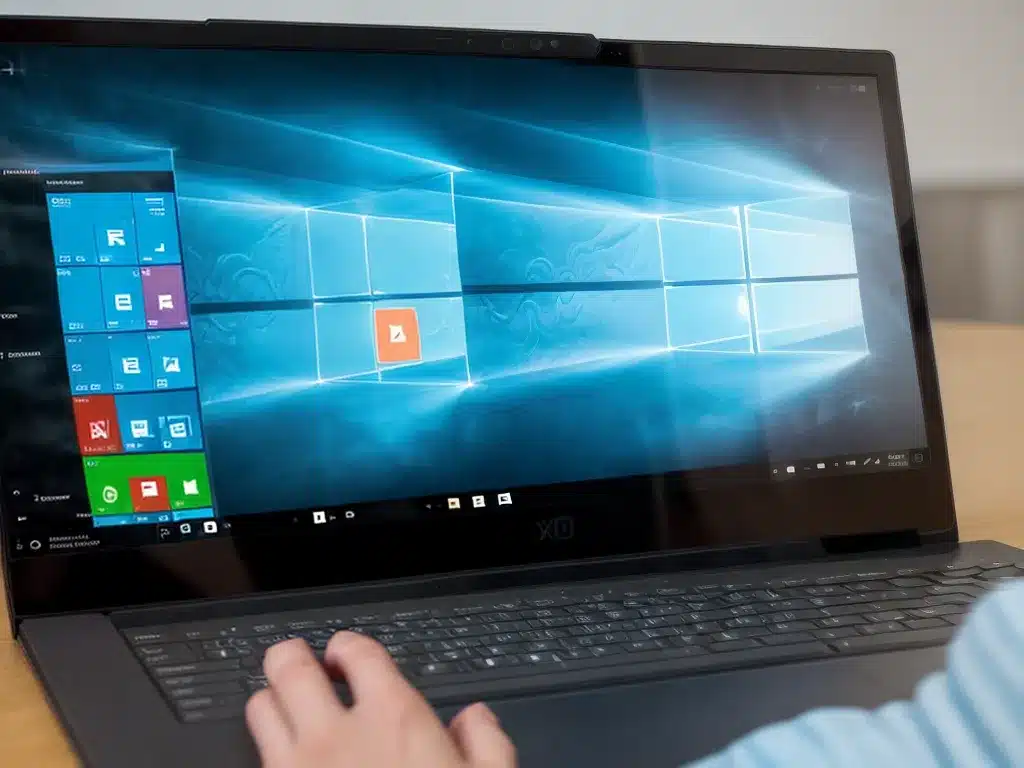
Checking your computer’s specifications or “specs” in Windows 10 is easy and can be done in just a few steps. Knowing your computer’s specs like processor speed, RAM amount, and graphics card information can help you understand your system’s capabilities and performance. Follow along below to learn how to check your full computer specs on a Windows 10 machine.
Use the System Information Tool
The easiest way to view all your key computer specs in one place is to use the built-in System Information tool in Windows 10. Here’s how:
-
Open the Start menu and search for “System Information”. Click on the “System Information” app.
-
In the System Information window, go through each of the categories listed on the left side to view details about your device’s specs:
-
System Summary – Provides an overview of your device name, OS version, manufacturer, and model.
-
Hardware Resources – Details about your processor(s), BIOS version, total memory (RAM), etc.
-
Components – Specific information on your system’s motherboard, graphics card, storage drives, etc.
-
Go through each category and its sub-categories to get a full breakdown of your Windows 10 computer’s specs. The categories are organized intuitively and you can also search for specific terms like “graphics” to jump to relevant results.
The key specs I typically look for in System Information are:
-
Processor – Brand, number of cores, speed in gigahertz
-
RAM – Amount of memory in gigabytes
-
Graphics card – Model, total available graphics memory
-
Hard drives – Storage capacity, space used, interface type
-
Motherboard – Brand, model, BIOS version
Check DxDiag for Gaming/Graphics Specs
For detailed information related to your graphics card and gaming capabilities, use the DxDiag tool in Windows 10. DxDiag shows specs useful for PC gaming and troubleshooting graphics issues.
To open it:
-
Search for “DxDiag” on the Start menu and launch the app.
-
Click “Save All Information” to save a text file with your full PC stats from DxDiag.
-
Go through the DxDiag tabs to see relevant details:
-
System – RAM, processor, Windows version
-
Display – Graphics card model, drivers, resolution
-
Sound – Sound card, drivers, capabilities
-
The “Notes” section at the bottom provides extra specifics on things like your graphics card’s dedicated video memory amount.
Key details to look for related to gaming/graphics:
-
GPU model – Nvidia, AMD/Radeon graphics cards have different capabilities
-
Video memory – Minimum/recommended for smooth gameplay
-
Driver versions – Important to keep graphics drivers updated
-
DirectX version – Ensure you have the latest DirectX for best compatibility
-
Display resolution – Higher is better for detailed graphics
-
Pixel shader / Vertex shader – Versions indicate GPU shader capabilities
Use Task Manager to View Utilization
Task Manager provides real-time monitoring of your CPU, memory, disk, and network utilization as you run apps and processes on your Windows 10 PC. Here’s how to use it to check performance:
-
Press Ctrl + Shift + Esc to open Task Manager.
-
Go to the “Performance” tab.
-
View overall CPU and memory (RAM) usage graphs and percentages.
-
Switch between “CPU”, “Memory”, “Disk”, and “Ethernet” tabs to see specifics on each component’s real-time demand and utilization.
-
For CPU, you can right-click on the graph and change to “Logical processors” view to see per-core CPU usage.
-
Hover over tabs in the processes section to sort by CPU, Memory, Disk, or Network usage.
-
Close background processes and apps to better understand the system resources each utilizes.
Key things to monitor for performance:
-
CPU utilization per core – Shows if CPU is bottleneck for app performance
-
Memory use – Check if physical RAM is sufficient or being maxed out
-
Disk queue length – High queue means disk slowdown; upgrade to SSD
-
Network use per process – Determine network-intensive apps
Compare Specs to System Requirements
Once you know your computer’s full specifications, you can better determine how suitable it is to run modern apps, games, creative software, and more.
Some things to compare your specs against:
-
Software system requirements – See if RAM/GPU/other specs meet minimums
-
Game specs – Compare to recommended and ideal gaming PC builds
-
Creative apps needs – Video editing and 3D modeling have high GPU/CPU demands
-
Upgrades – Determinecomponent bottlenecks and what to upgrade next
If your Windows 10 computer doesn’t meet the specs to run the latest software or games smoothly, some things you can do are:
-
Close background programs and processes
-
Add more RAM
-
Upgrade graphics card/processor
-
Tweak in-game graphics settings for optimal performance
-
Use lower resolution or settings in creative apps
-
Ultimately upgrade to a new PC build if necessary
Knowing your detailed Windows 10 computer specs empowers you to monitor system resources, troubleshoot performance issues, and plan future upgrades. Use the steps outlined in this guide to access key details on CPU, RAM, graphics, storage, and other components to fully understand your Windows 10 machine’s capabilities.












